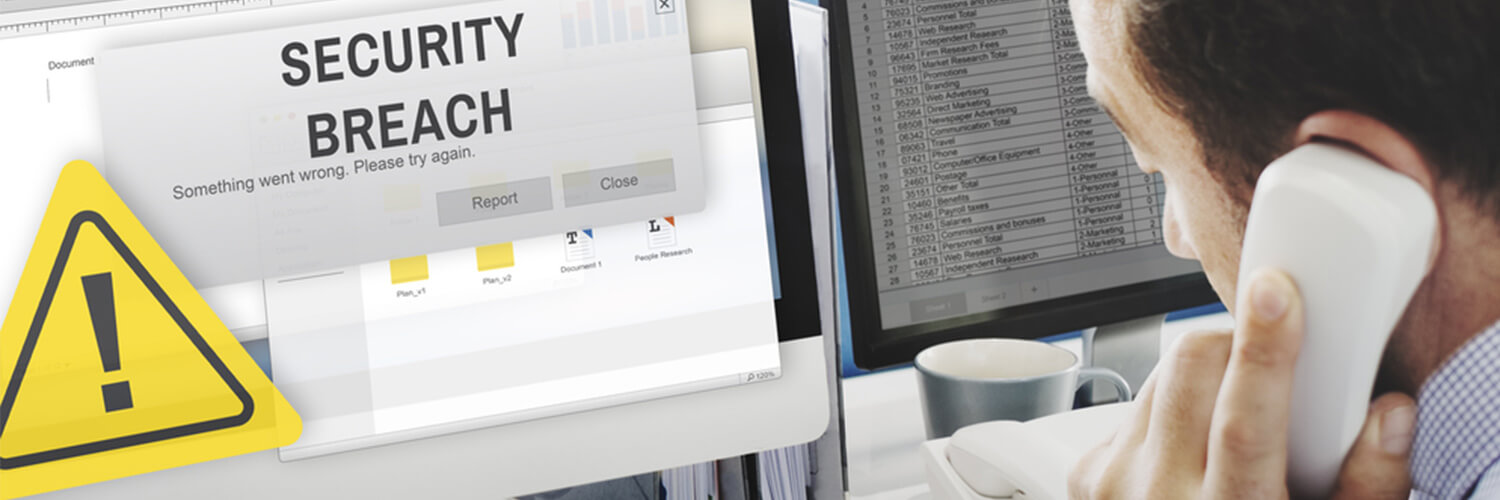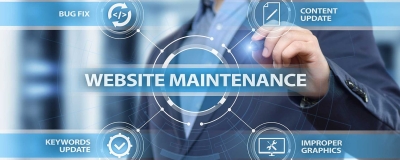15 Ways to Improve Your Website Security in 2024
In today’s digital age, websites have become indispensable tools for businesses and individuals alike. However, with the growing reliance on the internet, website security has become a paramount concern. Hackers and cybercriminals are continuously devising new tactics to breach websites and exploit sensitive information. To protect your online presence and maintain the trust of your users, implementing robust website security measures is imperative. In this article, we will explore the importance of website security, common vulnerabilities, and 15 practical tips to enhance your website’s security.
Table of Content:
- What is Website Security?
- Why Is Website Security Important?
- Why Websites Get Hacked?
- Safeguarding Against Automated Attacks
- Information Security with the CIA Triad
- 5 Common Website Security Vulnerabilities & Threats
- 15 Essential Tips for Securing and Maintaining Your Website’s Security
What is Website Security?

Website security refers to the set of measures and protocols implemented to safeguard a website from unauthorized access, data breaches, and cyber-attacks. It involves employing various strategies to ensure the confidentiality, integrity, and availability of the website’s data and services.
Why Is Website Security Important?
- Protecting Sensitive Information: Websites often collect and store users’ personal and financial data, such as credit card information and email addresses. A security breach can lead to identity theft and financial losses.
- Building Trust and Credibility: Customers are more likely to trust websites that prioritize security. Demonstrating a commitment to protecting user data fosters loyalty and enhances the credibility of your brand.
- Preserving Reputation: In the event of a website breach, your reputation can be at stake, resulting in adverse publicity and a potential loss of clientele. The process of recovery from such an incident can be arduous and time-intensive.
Why Websites Get Hacked?

The internet is a vast landscape with over 1.13 billion websites, creating an expansive playground for cybercriminals seeking to exploit vulnerabilities for their gain. Contrary to popular belief, website size does not deter hackers, as even smaller websites hold value for them. In this article, we will delve into the primary objectives that drive website hacking, shedding light on the diverse motives of these malicious actors.
Exploiting Site Visitors:
One of the main goals of website hacking is to exploit unsuspecting site visitors. Cybercriminals may inject malicious code, such as Cross-Site Scripting (XSS) attacks, to infect users’ devices or redirect them to fraudulent websites. This tactic aims to steal sensitive information like login credentials, financial data, or personal details, subjecting visitors to potential identity theft or financial losses.
Stealing Information Stored on the Server:
Hackers are persistent in their pursuit of valuable data stored on website servers. From customer databases to intellectual property, no information is safe from their grasp. Whether the website belongs to a small business or a large corporation, any breach of data can lead to significant consequences, including financial repercussions and reputational damage.
Tricking Bots and Crawlers (Black-Hat SEO):
Some cybercriminals resort to black-hat SEO techniques to manipulate search engine rankings by tricking search engine bots and crawlers. These tactics include keyword stuffing, hidden text, or spammy backlinks. By doing so, they aim to boost their own websites’ visibility and traffic, undermining fair competition and violating search engine guidelines.
Abusing Server Resources:
Hijacking website servers to exploit their computing power is another common objective of website hacking. Hackers might use compromised servers to carry out Distributed Denial of Service (DDoS) attacks, spreading malware, or mining cryptocurrencies. Such illicit activities not only slow down legitimate website operations but also create significant operational costs for website owners.
Pure Hooliganism (Defacement):
In some cases, hackers engage in hacking as an act of pure hooliganism, seeking to deface websites for no specific gain other than causing chaos and disruption. Defaced websites can display offensive content or messages, damaging the website owner’s reputation and creating a sense of insecurity among its visitors.
Safeguarding Against Automated Attacks
In today’s digital landscape, setting up an online presence is more accessible than ever for website owners, thanks to user-friendly open-source content management systems (CMS) like WordPress, Magento, Joomla, or Drupal.
With the convenience of these platforms, regular security updates are frequently provided to enhance protection. However, it’s essential to be cautious when incorporating third-party extensible components like plugins or themes. These seemingly helpful additions can inadvertently introduce vulnerabilities, making your website susceptible to opportunistic automated attacks. Safeguarding your online assets demands a proactive approach to fortifying your site’s defenses and thwarting potential threats effectively
Information Security with the CIA Triad
In the realm of information security, an essential benchmark is the CIA triad, encompassing Confidentiality, Integrity, and Availability. This powerful model serves as a foundation for crafting robust policies that safeguard organizations from potential threats.
Safeguarding Confidentiality:
Confidentiality revolves around stringent access control mechanisms to prevent unauthorized access to sensitive information. Employing a combination of robust passwords, usernames, and other access control components, organizations can ensure that only authorized personnel have access to crucial data.
Upholding Integrity:
Integrity guarantees the accuracy and unaltered state of information received by end-users, leaving no room for unauthorized alterations. To achieve this, encryption techniques play a pivotal role, with Secure Socket Layer (SSL) certificates being a prominent example. SSL encryption ensures that data transmitted between users and the website remains secure and intact.
Ensuring Availability:
Availability forms the final pillar of the triad, ensuring seamless access to information when required. Among the most prevalent threats to website availability are Distributed Denial of Service (DDoS) attacks, which can cripple a website’s functionality by overwhelming its servers with traffic.
As we delve into the world of automated and targeted attacks, understanding these fundamental principles of the CIA triad empowers us to grasp the significance of robust website security measures against a variety of common threats.
5 Common Website Security Vulnerabilities & Threats

Let’s delve into the most common website vulnerabilities and threats that modern websites face, and explore ways to safeguard your online presence.
SQL Injections:
SQL injection attacks are executed by injecting malicious code into a vulnerable SQL query. Attackers exploit weak input validation and send a crafted request to the website’s database. A successful attack alters the database query, returning desired information for the attacker instead of the expected data. In severe cases, SQL injections can even introduce malicious information into the database, leading to data breaches and unauthorized access.
Prevention: To protect against SQL injections, implement strict input validation, use parameterized queries, and avoid dynamic SQL construction.
Cross-Site Scripting (XSS):
Cross-site scripting attacks involve injecting malicious client-side scripts into a website and propagating them to users who visit the site. The danger lies in manipulating how the website displays content, forcing the victim’s browser to execute the attacker’s code. This can lead to session hijacking, data theft, and even complete site takeover if a privileged user unwittingly loads the malicious script.
Prevention: Sanitize user input, encode output, and employ a Content Security Policy (CSP) to mitigate the risks associated with XSS attacks.
Credential Brute Force Attacks:
Credential brute force attacks target login credentials to gain unauthorized access to a website’s admin area or control panel. Attackers use scripts to try various username and password combinations until they find a valid one. Once inside, they can carry out harmful activities such as spam campaigns, coin-mining, and stealing sensitive information.
Prevention: Enforce strong password policies, implement account lockouts after multiple failed login attempts, and consider using CAPTCHA to deter automated attacks.
Website Malware Infections & Attacks:
Website malware infections are among the most insidious threats, as they can infect a site discreetly and remain undetected for extended periods. Malicious code can compromise user data, deliver harmful content to visitors, or lead to search engine blacklisting.
Prevention: Regularly scan your website for malware using security tools and plugins. Keep all software up to date, including CMS, plugins, and themes.
DoS/DDoS Attacks:
A Distributed Denial of Service (DDoS) attack overwhelms a website’s network, server, or application with a deluge of fake traffic, causing service disruption or slowdowns. Even a tiny amount of traffic can be enough to successfully target vulnerable endpoints.
Prevention: Employ DDoS protection services and configure firewalls to filter out suspicious traffic. Consider utilizing Content Delivery Networks (CDNs) to distribute traffic and enhance website performance during an attack.
15 Essential Tips for Securing and Maintaining Your Website’s Security:
Securing your website is of utmost importance to protect it from potential threats. In this section, we will explore essential steps to enhance your website’s security. While this is not an exhaustive guide, it offers valuable website security guidelines to help you choose the right services tailored to your requirements.
Developing a Comprehensive Website Security Framework:
Irrespective of your business’s size, implementing a well-structured security framework is crucial for reducing overall risk and safeguarding your online assets.
Recognizing that security is an ongoing process, the journey begins with establishing a robust website security framework. This involves fostering a “culture of security” and conducting scheduled audits to ensure simplicity and timeliness in addressing potential threats.
The system encompasses a core set of five crucial functions: Recognition, Safeguarding, Detection, Response, and Restoration. Let’s delve into each function and examine the respective steps to be implemented.
Identity:
During this phase, meticulous asset inventory and management practices are essential. The inventory can be further categorized into:
- Web properties
- Web servers and infrastructure
- Plugins, extensions, themes, and modules
- Third-party integrations and services
- Access points/nodes
Once the website assets are documented, steps can be taken to audit and fortify each element against potential attacks.
Protect:
Deploying preventative web security measures is of paramount importance. These measures encompass protective technologies and layers of defense. Fulfilling compliance requirements, such as PCI, is one aspect, while virtually patching and fortifying vulnerable environments are equally critical. Additionally, employee training and access control policies contribute to a robust protective shield.
Activating a web application firewall stands out as one of the most effective ways to secure your website. Thoughtfully configuring security processes and employing the right tools play a significant role in enhancing your website’s security posture.
Detect:
Continuous monitoring forms the backbone of this function. Implementing monitoring tools to track website assets and receive alerts about any potential issues is vital. Monitoring should encompass:
Security scanners and tools like SiteCheck are valuable in scanning for indicators of compromise or vulnerability.
Respond:
In this phase, analysis and mitigation are crucial to build an effective response. Having a pre-established incident response plan significantly contributes to handling security incidents efficiently. A well-structured incident response plan should include:
- Selecting an incident response team or individual
- Reporting and reviewing the incident findings
- Implementing mitigation strategies
During the remediation process, anticipating the nature of malware beforehand is challenging. Cross-contamination issues in shared server environments can escalate quickly, underscoring the need for swift and decisive actions.
- The incident response process, as defined by NIST, involves four broad phases:
- Preparation & planning
- Detection & analysis
- Containment, eradication & recovery
- Post-incident activities
Ensuring a thorough preparation phase and having a reliable team dedicated to website security are indispensable elements for the success of your security endeavors.
Recover:
Recovery planning is critical, encompassing a complete review of all phases in the event of an incident. Backup plans are crucial, especially in cases where prior phases may have failed, such as ransomware attacks.
Communication Strategy:
In case of data risk, promptly inform customers, adhering to relevant data protection regulations like GDPR’s reporting requirements within 72 hours of a data breach.
Automatic Backups:
Risk can never be eliminated, so ensure you have automatic backups in place to recover data quickly. Having both local and external backups provides redundancy and safeguards against hardware failure or attacks.
2. Keep Everything Updated:
Countless websites fall victim to attacks daily due to outdated and vulnerable software. It is crucial to promptly update your website whenever a new plugin or Content Management System (CMS) version becomes available. These updates often contain crucial security enhancements and vulnerability patches.
In today’s automated attack landscape, bots continually scan websites, seeking potential weaknesses. Monthly or weekly updates are no longer sufficient, as bots can exploit vulnerabilities before you get a chance to patch them. To bridge this gap, consider implementing a website firewall, which virtually patches security holes as soon as updates are released.
For WordPress websites, WP Updates Notifier is a valuable plugin that notifies you when a plugin or WordPress core update is available, keeping you informed about essential updates.
3. Use Strong Passwords:
The security of your website largely depends on your password strength. Have you considered how the passwords you use could jeopardize your website’s security?
Cleaning up infected websites often requires logging into a client’s site or server using admin user details. Surprisingly, many users still have insecure root passwords, such as “admin/admin,” leaving their websites vulnerable to attacks.
To protect against password-related breaches, avoid using passwords found on lists of breached credentials. Hackers compile these lists with leaked data and commonly used dictionary words. If your passwords match any of these compromised entries, your site is at risk.
Follow these best practices to create strong passwords:
- Avoid password reuse: Each password should be unique, and using a password manager can simplify this process.
- Opt for lengthy passwords: Aim for passwords longer than 12 characters, as longer passwords are harder to crack.
Generate random passwords: Avoid using easily guessable words or character replacements. Utilize password managers like LastPass (online) or KeePass 2 (offline) to store and generate strong, random passwords. These tools encrypt your passwords, making them secure and easily accessible when needed. Password managers help you manage strong passwords without the hassle of memorizing or jotting them down.
4. One Site, One Container:
When it comes to hosting websites, one of the crucial security practices to follow is maintaining a single site per server container. Although it might seem tempting to host multiple websites on a single server, especially with so-called ‘unlimited’ web hosting plans, this approach can lead to severe security vulnerabilities. Combining multiple sites in the same location increases the attack surface and exposes your websites to potential cross-site contamination.
Cross-site contamination occurs when one site is negatively affected by the activities of neighboring sites within the same server due to poor isolation or account configuration. To understand this better, consider a server with just one site that has a WordPress installation with a theme and ten plugins. When hosting five sites on the same server, an attacker gains access to multiple potential targets, including three WordPress installations, two Joomla installations, five themes, and 50 plugins. Moreover, once an attacker exploits a vulnerability on one site, the infection can spread effortlessly to other sites sharing the server.
The consequences of cross-site contamination can be devastating. All your sites could be hacked simultaneously, making the cleanup process significantly more challenging and time-consuming. The infected sites might continuously reinfect one another, creating an endless loop of malware propagation.
Even after successfully cleaning up the infections, you’ll face the daunting task of resetting passwords. Instead of dealing with just one site, you’ll have to update passwords for all the websites hosted on that server. This includes CMS databases and FTP users associated with each site. Neglecting this step can lead to re-infections, forcing you to restart the entire cleanup process.
5. Limit User Access & Permissions to Enhance Security:
In addition to securing your website code, it’s crucial to consider the security of your users. Recording IP addresses and activity history can be valuable for forensic analysis in case of any security incidents.
The principle of least privilege is a fundamental concept for user access and permissions management. It revolves around two main objectives: using the minimum set of privileges required to perform a specific action and granting those privileges only for the time they are necessary.
When assigning privileges to specific roles, it’s essential to define what actions they can and cannot perform. In an ideal system, a role will prevent any attempts to perform actions beyond its designated scope. For example, while administrators might have the privilege to inject unfiltered HTML or install plugins, authors should have limited access based on their trust level, with separate roles and locked-down accounts.
This principle becomes particularly relevant for websites with multiple users or logins. Ensuring that each user has only the necessary permissions for their tasks is crucial. If elevated privileges are required for a specific task, they should be granted temporarily and then promptly revoked once the task is completed.
By establishing clear user roles and access rules, you minimize the risk of mistakes and reduce the potential damage caused by compromised accounts or malicious users. Moreover, accountability and monitoring play an essential role in user management. Having separate accounts for each user enables you to track their behavior through logs, identifying any unusual login times or suspicious locations, which can be indicative of unauthorized access.
Maintaining audit logs is vital to detecting any anomalous changes to your website. An audit log is a record that tracks events on your website, allowing you to identify potential security breaches and verify whether accounts have been compromised. For WordPress websites, you can utilize security plugins like Sucuri’s free Security Plugin from the official WordPress repository to assist in performing these audit logs automatically.
Understanding File Permissions:
File permissions play a crucial role in website security, defining who can perform specific actions on files. Each file has three types of permissions, represented by numbers:
- Read (4): Allows viewing the file contents.
- Write (2): Permits changing the file contents.
- Execute (1): Enables running program files or scripts.
To grant multiple permissions, you simply add the corresponding numbers together. For example, to allow both read (4) and write (2) permissions, you set the user permission to 6. If you need a user to have read (4), write (2), and execute (1) permissions, then you set the user permission to 7.
Different User Types
Three user types play a role in file permissions:
- Owner: Typically the creator of the file, but this can be changed. Only one user can be the owner.
- Group: Each file is assigned to a specific group, and any user belonging to that group will inherit its permissions.
- Public: All other users fall into this category.
By properly managing user access, permissions, and file security, you can significantly enhance the overall security posture of your website, mitigating potential risks and protecting sensitive data from unauthorized access and exploitation.
6. Customize Your CMS Settings
In today’s digital landscape, Content Management System (CMS) applications are popular for their user-friendly interfaces. However, from a security perspective, default settings can pose significant risks. Most common website attacks are automated and target sites with default configurations. Fortunately, you can greatly reduce the risk of such attacks by simply modifying the default settings when installing your preferred CMS.
For instance, some CMS applications allow users to write or install various extensions freely, potentially creating vulnerabilities. To mitigate such risks, adjust settings related to comments, user permissions, and user information visibility. Additionally, pay attention to file permissions, as default settings may need to be hardened.
Whether during the initial CMS installation or later, taking the time to customize these settings is essential to fortify your website’s security.
7. Safeguard Your Website: Prudent Extension Selection
The extensibility of CMS applications is a valuable feature that webmasters appreciate, as it enables the integration of various functionalities. However, it can also introduce potential security weaknesses. The wide array of plugins, add-ons, and extensions available raises concerns about their safety and reliability.
When choosing extensions, consider the following criteria to ensure their security:
- Regular Updates: Opt for extensions that receive frequent updates, ideally within the past year.
- Regular updates indicate ongoing development and a willingness to address security issues promptly.
- Reputation and Popularity: Extensions developed by established authors with a significant number of installations are more trustworthy. Experienced developers adhere to best security practices and are less likely to include malicious code.
- Trusted Sources: Download plugins, extensions, and themes exclusively from reputable sources. Beware of pirated versions that may contain malware designed to infect websites.
8. Safeguard Your Data: Implement Website Backups
In the unfortunate event of a hack or security breach, having website backups becomes invaluable for recovering your website. While a backup solution should not be regarded as a complete security solution, it can aid in restoring damaged files.
A reliable backup solution should meet the following requirements:
- Off-Site Storage: Keep your backups off-site to protect them from potential attacks on your web server. Storing backups on the same server as your website poses a considerable security risk, as hackers can easily access both the backups and the server.
- Automatic Backup: Choose a backup solution that automatically schedules backups based on your website’s needs. Regular backups are essential to ensure that you can recover your website from a point before the security breach occurred.
- Reliable Recovery: Test your backups to ensure their functionality and have multiple redundant backups to enhance your recovery options.
9. Strengthen Your Website: Configure Server Files
Familiarize yourself with your web server configuration files, such as .htaccess for Apache, and nginx. conf for Nginx, or web. config for Microsoft IIS. These files are powerful tools that allow you to execute server rules to enhance your website security.
Adopt these best practices for your specific web server:
- Prevent Directory Browsing: Limit the exposure of directory contents to prevent malicious users from accessing sensitive information.
- Prevent Image Hotlinking: Although not a direct security improvement, preventing other websites from hotlinking to your images preserves your bandwidth allowance.
- Protect Sensitive Files: Set rules to safeguard sensitive files and directories, such as CMS configuration files, which contain database login details in plain text. Additionally, restrict PHP execution in directories with images or uploaded files.
By following these server configuration practices, you can bolster your website’s security and protect against potential attacks.
10. Secure Your Data Transmission: Install an SSL Certificate
SSL certificates play a crucial role in encrypting data during transit between web servers and browsers. By employing encryption, critical data remains confidential and protected from interception by malicious actors.
Types of SSL certificates, like organization SSL or extended validation SSL, can further enhance credibility by displaying your organization’s details to visitors, signaling legitimacy.
However, it is essential to understand that while SSL certificates secure data transmission, they do not directly protect your website from attacks. Implementing additional security measures is necessary to safeguard your website itself.
11. Stay Vigilant: Install Scanning & Monitoring Tools
To maintain the integrity of your website, it is crucial to continuously monitor and scan for potential threats. Alert mechanisms improve response times and enable effective damage control in the event of a security breach. Regularly reviewing logs and monitoring user actions, especially in critical areas, can help detect anomalies and unauthorized access attempts.
Triggers and alerts should be set to notify you of potential attacks, such as brute force attempts and exploit targeting. Timely application of updates and patches is essential to ensure your website remains secure against known vulnerabilities.
Implementing scanning and monitoring tools is an integral part of maintaining website security and protecting against potential threats.
12. Prioritize Personal Security: Secure Your Devices
Ensuring the security of your personal computer is paramount for website owners, as compromised devices can serve as vectors for infecting your website. Scan your computer for malware regularly, especially if your website has been hacked, as malware can spread from infected devices to web servers through text editors and FTP clients.
To reduce potential risks, uninstall all unused programs and browser extensions from your computer. These unused applications and plugins can carry privacy issues and create attack vectors. Research to understand the purpose of specific applications and remove those that are unnecessary.
By practicing personal security best practices, you minimize the chances of your own devices becoming a vulnerability for your website.
13. Safeguard Against Attacks: Utilize a Website Firewall
While SSL certificates provide data encryption, they do not protect against web application vulnerabilities or server-based attacks. A web application firewall (WAF) is designed specifically to prevent such attacks and keep your website secure, allowing you to focus on your business.
14. Employ Expert Security Services: Trust in a Website Security Solution
Choosing a reputable website security service is essential for protecting your site from potential vulnerabilities, poor access controls, and server resource exploitation. By implementing a comprehensive security solution, you can ensure that your website remains safe and accessible for your visitors. Trust in the expertise of security professionals to safeguard your online presence while you focus on your core business activities.
15. Ensuring Ecommerce Website Security and Complying with PCI Standards

To protect sensitive cardholder data collected during online transactions, website owners with online stores must adhere to the Payment Card Industry Data Security Standards (PCI-DSS). These comprehensive requirements play a critical role in safeguarding customer information.
Under PCI-DSS, cardholder data that demands utmost security includes the full primary account number (PAN) and other key elements, such as:
- Full magnetic stripe data (or chip equivalent)
- Expiration date
- Service code
- PIN code
- CVV digits
- Cardholder name and/or surname
Regardless of the method of data sharing – whether digitally, in written form, or verbally – PCI compliance regulations apply, underscoring the importance of robust data protection measures at every stage.
For e-commerce websites, prioritizing the proper encryption of cardholder data during transit from the browser to the web server via HTTPS is paramount. Additionally, securely storing this data on the server and transmitting it to third-party payment processors with encryption further bolsters the security infrastructure.
It is crucial to remain vigilant as hackers are constantly on the lookout to steal or intercept cardholder data, whether it is in transit or at rest. To assist website owners in meeting PCI compliance requirements, our PCI Compliance Guide and Checklist offer detailed guidance and step-by-step procedures for adherence.
By following these guidelines and maintaining strict PCI compliance, e-commerce websites can bolster their security measures and safeguard customers’ sensitive data, fostering trust and credibility among online shoppers.












